Science? In geopolitics?
That´s right: the Truth is like a hot, glowing piece of metal. And we know only one tool to manipulate it: the scientific method.
So, before we delve into the whole Ukraine situation, let us set the stage by presenting what a good explanation is, as compared to a bad one. We will use this notion as a proxy to the scientific method. It relies on the writings of David Deutsch, who in turn was inspired by the great philosopher of science Karl Popper. Essentially, a good explanation is characterized by:
It explains the phenomena at hand (duh)
All elements of it are strictly necessary and non-variable
Often but not necessarily, the explanation has reach beyond the phenomenon at hand
Consider the ancient Greek myth explaining seasons. Hades, god of the underworld, abducts Persephone, the goddess of spring, forcing her into a marriage that dictates she return to him annually. Each year, her compelled return to the underworld saddens her mother, Demeter, goddess of the earth, whose ensuing sorrow leaves the earth cold and barren, ushering in the fall.
Clearly, this myth belongs in the category of bad explanations. The reason is that Persephone could easily be substituted with any other mythical figure, and so could Hades. One could also invert the emotional temperature and propose that any time Persephone leaves, Demeter gets fiery with anger and the earth heats up, ushering in the spring. Most notoriously, this theory fails to explain the inverse presence of seasons on the two hemispheres. This, along with the non-existence of the deities, is where the theory exposes itself as testable - and fails.
In contrast, ancient Greek astronomers proposed a theory for the slow precession of star formations across the night sky, attributed to the tilt of the Earth's axis of rotation with respect to the ecliptic plane.
Now this is a good explanation: Every last element of the model plays a functional role. Also, no element can be substituted for any other: If we replace the earth with the moon for example, the theory fails. The explanation also has reach since it not only delivers a satisfactory explanation for the precession of the stars, but also elucidates the cycle of the seasons. Thus, each hemisphere tilts towards the sun for half the year and away for the other half, elegantly accounting for the alternating seasons and their hemispherical asymmetry.
Let us apply this way of thinking to the Ukraine situation, this being the ‘science’ part eluded to in the title. On February 24 2022, Russian armed forces invaded Ukraine. The media landscape in the West reacted with shock, followed by outrage. A ‘Conventional Wisdom’ that no major media outlet dare criticize to this day was quick to emerge.
It goes something like this: Authoritarian Russia, in an utterly unexpected and unprovoked act of aggression, launched a full-scale invasion against Ukraine. It did so because Bond villain Putin wants to conquer Ukraine in an effort to restore Russia to something like the Soviet Union, to cement his legacy. Putin needs to be stopped, otherwise his behavior will set a precedent and he will continue on his conquest, possibly taking over Moldova and the Baltics. This is a fight of nothing other than good vs. evil, democracy vs. autocracy and no outcome other than the total defeat of Russia is acceptable.
Of course, the Conventional Wisdom branches off into others, such as how incredibly incompetent the Russian military behaves, how Western sanctions will bring the Russian economy to its knees and so on. For the sake of brevity however, I will focus on the main tenets, and test them for being good or bad explanations.
Unfortunately, this analysis cannot be done purely from the armchair and will require tapping into some facts - then again, so did the testing of the Persephone myth.
Before we delve into the trenches, I would like to prime the reader with a prescient thesis:
The only way to be seduced by the Conventional Wisdom is by means of ignorance.
The war was unexpected
Following the Conventional Wisdom, the conflict erupted began in 2022. Some observers point to the Maidan events in 2014, but in order to truly grasp the context, we need to travel farther back in time.
In his 1997 book ‘The Grand Chessboard‘, former National Security Advisor of the United States, Zbigniew Brzezinski foreordained that the final step of US hegemony over Europe would have to take place in Ukraine. Ukraine plays a pivotal and geostrategic role in the containment policy of Russia. With this, Brzezinski was merely applying the infamous Wolfowitz doctrine aimed at maintaining and expanding the position as a total global hegemon of the US.
Fun fact: his son, Mark Brzezinski currently serves as the United States Ambassador to Poland, arguably the most militantly Russophobic government in the world.
In his 1993 article ‘Toward a New World Order: The Future of NATO’, George Soros stated that in order to justify its continued existence, NATO will need an enemy to rally its members against. According to him, this role has undoubtedly to be played by Russia. Soros writes: ‘the combination of manpower from Eastern Europe with the technical capabilities of NATO would greatly enhance the military potential of the Partnership because it would reduce the risk of body bags for NATO countries, which is the main constraint on their willingness to act.’
The current Slav on Slav fighting with NATO equipment seems to realize his ghoulish premonition. Incidentally, he also foresaw the involvement of Japan with NATO. While Soros is not a politician himself, he has contributed to countless coups and color revolutions through the euphemistically called NGOs across the globe, and will reappear later.
William Burns, the former US Ambassador to Russia and now director of the CIA, captured the Russian sentiment in a February 2009 memorandum ‘Nyet means nyet: Russia’s NATO enlargement red lines.’
He also states that military intervention is ‘a decision Russia does not want to have to face.’
In 2019, the RAND corporation published a 360 page report on how to weaken Russia, sponsored by the Army Quadrennial Defense Review Office and other government entities. RAND is an exceptionally influential and hawkish Washington think tank. Their reports, just like the occasional intelligence leak, offer a backstage insight into the planning of US policy makers. They allow us to put aside the thick veil of liberal rhetoric and glimpse into the establishment’s Realpolitik.
The report comes to the same conclusions about the high potential for Russian escalation as a reaction to US policy as the previously cited figures. This point is made already in the introduction of the paper:
“Most of the steps covered in this report are in some sense escalatory, and most would likely prompt some Russian counter-escalation.”
Virtually all the proposed provocations listed in the report will have been realized by 2023.
Other big names that warned about the potential for war include the last ambassador to the USSR, Jack Matlock, financial advisor and professor Jeffrey Sachs and many others.
So much for the idea that the war was unexpected: bad explanation.
The war was unprovoked
The NATO Element
NATO is a organization originally created in 1949 as a military pact against a potential Soviet invasion of Europe. However, it persisted after the dissolution of the Soviet Union, which brings us back to the aforementioned writings of Soros: NATO needed to justify its continued existence.
During meetings spanning from February to July 1990, Mikhail Gorbachev, the then-leader of the Soviet Union, was presented with the now-infamous pledge by Western leaders that NATO would not advance "one inch eastward." This promise was given in exchange for German reunification and accession into NATO.
What many fail to realize is the magnitude of the operation: Some 400’000 troops that had been stationed in Germany for 45 years were withdrawn some 2000 km eastwards, back into Russia. This was a tremendous gesture, especially given the unfathomable 28 million death toll the German war machine had inflicted upon the Soviets. Moreover, it's essential to emphasize that this agreement was not just brokered by the US leadership; security guarantees were extended by all Western leaders, including Baker, Bush, Genscher, Kohl, Gates, Mitterrand, Thatcher, Hurd, Major, and Woerner. This pledge is often denied by the West, in spite of declassified documents to the contrary.
Sometimes, the claim is pushed that this promise was never formally signed in a written form and that therefore Russia has no legitimate grievance to put forward. However, many historic milestones were built on verbal agreements, including the Yalta conference of 1945, the Camp David Accords in 1978, the Helsinki Accords in 1975 and many more. This disingenuous move inaugurated a series of events that would shatter Russia’s trust in the West.
NATO enlargements were aggressively carried out in 1999, 2004, 2009 and 2017, bringing most of Europe, and particularly former Warsaw Pact members into NATO. But why is that such a thorn in Russia’s eyes?
There is a multitude of reasons for this. To begin with, with the Soviet Union gone, NATO is now directly aimed at Russia. Naturally, it does so under the usual smokescreen of liberal rhetoric about peace and democracy.
In the early 2000s, president Putin held negotiations with then NATO secretary-general George Robertson about Russian accession the alliance. It is unclear why the talks failed. In subsequent interviews, Robertson maintains Putin did not want to follow with the official application procedures, while Putin claims NATO did not accept Russia as an equal. The latter is supported by many Europeans expressing their nervosity at the idea of deliberating with Moscow as an equal.
Relations with the West and NATO deteriorated as the West organized the Orange revolution in Ukraine in 2004, and pursued the second tranche of NATO expansion.
Another reason for Russian mistrust in NATO is the offensive nature of organization. While the official line is that it is a defensive alliance, history will testify to the contrary, as actions speak louder than words:
NATO has trained and equipped secret stay behind militias in Europe, like GLADIO in Italy. Between 1955 and 1992, these groups, composed of former Nazis and fascists, coordinated hundreds of terrorist attacks, including the Bologna massacre in 1980, killing 85.
NATO bombed Yugoslavia in 1999, ostensibly to stop the ‘genocide’ against the Albanians. John Norris worked for the Clinton administration and in his book, he claims otherwise:
”It was Yugoslavia's resistance to the broader trends of political and economic reform--not the plight of the Kosovar Albanians--that best explains NATO's war.”
In other words, Yugoslavia failed to subjugate to the US run neoliberal order.NATO invaded Afghanistan in 2001 based on torture testimonials
NATO attacked Libya in 2011, causing hundreds of civilian casualties, devastating the country’s infrastructure and paving the way for additional tens of thousands dead following the earthquake inn 2023
Another major thorn in the eyes of Russia are the dual purpose Aegis Ashore Ballistic Missile sites in Poland and Romania. These are sites designed to intercept ballistic missiles. They were built ostensibly to protect Europe from attacks outside the Euro-Atlantic spheres, like Iran. However, they could also target Russian ICBMs, thus reducing Russian second strike capability. Furthermore, these missile sites were erected right at Russia’s border after the US unilaterally withdrew from the Anti-Ballistic Missile (ABM) Treaty, in yet another move of blatant provocation.
At first glance, it may seem like a good thing to have infrastructure capable of intercepting the doomsday ICBMs. But when we examine the game theory around nuclear annihilation, we find that it is centered around the sheer lunacy of it: there is no winner, everybody just dies in a nuclear war. Hence, these Aegis sites end up making nuclear strikes more probable, not less so. Especially given the US and NATO’s first strike policy which stands in sharp contrast with Russia’s defensive policy. The provocation becomes even more apparent when one considers their deliberate placement near the Russian border. As a testimony to the incredible peril this policy puts us all in, Russian officials are suggesting to transition their country into a first strike doctrine in response.
Don’t worry, it gets even better: these supposedly defensive missile silos can be quickly repurposed for offensive ballistic nuclear missiles, in violation of the INF (Intermediate-Range Nuclear Forces) treaty, the Helsinki accords and who knows how many other agreements.
Of particular concern to the Russians is the Tomahawk missile, which also comes in a nuclear warhead variant.
Russia publicly protested on all diplomatic channels against NATO expansion, but it was too weak to truly influence those developments during the 1990s. However, since the early 2000s, Russia has got back on its feet and clearly expressed that Ukraine was a red line for NATO expansion and will not be tolerated.
At the end of the 2008 Bucharest summit, NATO proceeded to actively invite Georgia and Ukraine into the alliance. The invitation not only flies in the face of the supposed ‘open doors’ policy of NATO, but is likely intended as yet another provocation against Russia. Former German chancellor, Angela Merkel, who vetoed the proposal, stated that Ukraine’s accession to NATO would be perceived by Russia as a ‘declaration of war’.
The Maidan Element
In February 2014, a succession of protests occurred in Kyiv, culminating in the ousting of the democratically elected government of President Yanukovych. Western media often characterizes these events as a popular uprising, a triumph for democracy and liberty, paving the way for Ukraine's rapprochement with Europe. However, that is a bad explanation, and here’s why:
Firstly, according to assistant state secretary Victoria Nuland, the US pumped an estimated 5$ billion into Ukraine between 1991 and 2013 to ‘ensure a secure and prosperous and democratic Ukraine’. In fact, this procedure illustrates the workings of US ‘soft power’. It operates by deploying a network NGOs with extremely well paid individuals, endowed with credentials from similarly prepped up institutes. These NGOs then engineer artificial movements or hijack grassroots and shape public opinion through extensive control of the information space. Two of the primary actors in Ukraine are the National Endowment for Democracy (NED), which hardly qualifies as an NGO as it relies on continuous funding from the US government, and the Open Society Foundations of George Soros. This technique has a notorious record of promoting civil unrest and regime change across the world.
If this sounds innocent, a simple exercise in reflectivity will ensure objectivity: Say you live in Switzerland, as I do. Correcting the sum of 5$ billion to match the Swiss GDP lands us at some 27$ billion. As a Swiss, would you be ok with a foreign entity pumping that kind of money into your country with the sole purpose of regime change?
Secondly, the riots escalated on February 20, after snipers shot both police forces and demonstrators from the second floor of the Tchaikovsky Conservatory, a building held by Andriy Parubiy and his ultranationalist Batkivshchyna (Fatherland) party. This event also characterizes the Maidan events as a military coup rather than a popular uprising.
A 2015 study based on thousands of videos, pictures and other media by Ottawa professor Ivan Katchanovski concludes that the Maidan sniper massacre was likely a false flag operation staged by the opposition, particularly another far-right party, the Right Sector. It is worth mentioning that the study, after initial acceptance by a journal, was hastily censored without peer review.
Another leaked phone call featuring EU foreign affairs chief Catherine Ashton and Estonian foreign minister Urmas Paet reveal that the officials were perfectly aware that the Maidan snipers were likely hired by the extreme-right opposition but chose to not mention it in public.
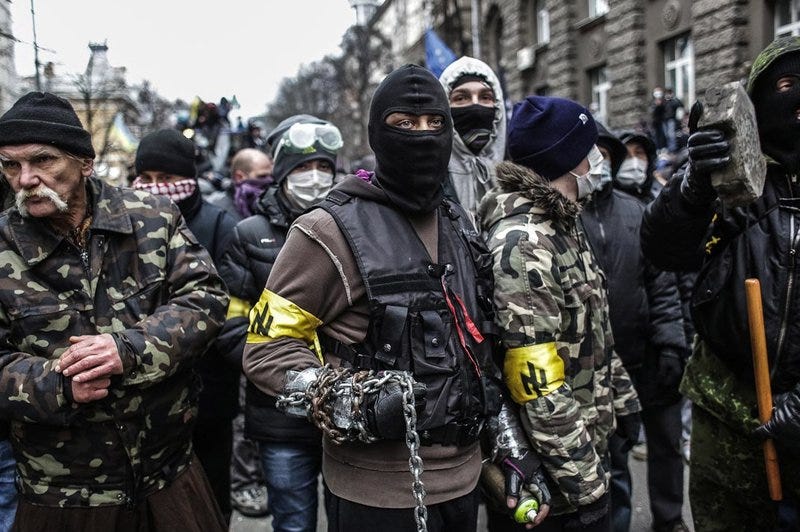
Last, but not least, a monumental phone call was leaked between Victoria Nuland and US ambassador to Kyiv Geoffrey Pyatt. This is the infamous ‘Fuck the EU’ phone call. However, that statement was merely highlighted to divert away from the actual substance: Nuland and Pyatt discuss how ‘Klitch’ (Klitchko), ‘is not gonna work’ for them. Klitchko is a former boxer known in the West and one of the leading figures of the Maidan revolts, the ‘top dog’ according to Pyatt. In that phone call, they determine that Yatsenyuk shall become prime minister of the new government. The phone call was leaked on February 4, the peak of the Maidan protests followed about 2 weeks after that and on February 27 2014, Yatsenyuk took office as the prime minister of Ukraine.
By December 2014, three foreigners, including Natalie Jaresko, a former US State Department official and investment fund manager, took office as ministers in the Ukrainian government, mere hours after being granted the Ukrainian citizenship.
Let us finish with the Maidan events with the cherry on top: On February 21, Yanukovich and members of the opposition had signed the Agreement on the Settlement of Crisis. This included mandatory reelections before December and a return to the 2004 constitution, satisfying the main demands of the opposition. This agreement happened under pressure from France, Germany and Russia to end the violence. All signatories from the opposition came from extreme right wing parties, namely Udar, Svoboda and Batkivshchyna.
On February 23, after Yanukovich fled Ukraine, the Ukrainian parliament, hence dominated by the aforementioned parties, hastened to push a resolution that repealed the 2012 Kivalov-Koleshchenko law on regional languages, which granted Russian and other minority languages official status in regions with significant linguistic minorities. Thus, while ostensibly demonstrating for freedom and democracy, the first move of the opposition was to inaugurate an apartheid regime, aimed primarily at the ethnic Russian population of Ukraine.
President Turchynov refused to sign the resolution, nevertheless mass protests erupted across the country, primarily in the regions primarily dominated by ethnic Russians, Crimea and the Donbas. In 2018, the law was finally passed.
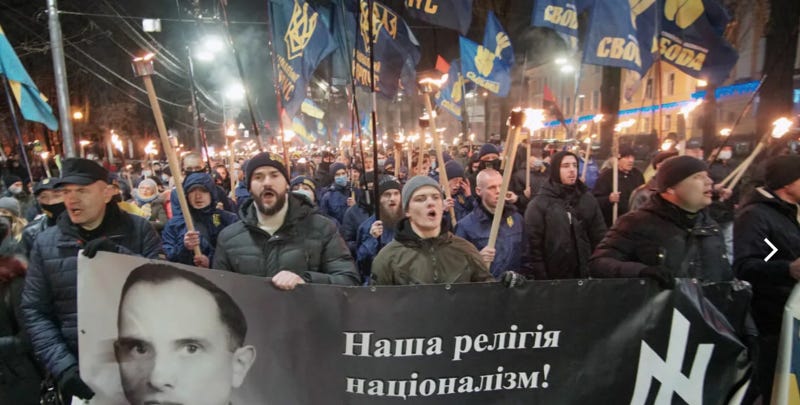
Thus, not only is the explanation of the events as a democratic, popular uprising a bad one, but a better explanations emerges: The 2014 Euromaidan events offer a historically unique insight into a US led coup d’état. A coup so successful, that the US state department succeeded in installing ‘their guy’ and handpicking the government. All in spite of a phone call leaking those intentions 3 weeks before the fact - a testimony to the ability of the media to divert public opinion from what matters.
Ukraine On The Primrose Path
As a response, on February 27 2014, Russia retook Crimea by seizing strategic buildings with unmarked soldiers, the famous ‘little green men’ in a clear violation of international law. Crimea is historically Russian and had been handed to the Ukrainian administration by decree in 1954 by Nikita Khrushchev as a sign of good will.
The annexation of Crimea happened for several reasons, primarily to protect the local Russian populations and to secure the Sevastopol military base, but also because Crimea forms a strategic buffer zone against NATO and offers access to the black sea.
In March, the local government organized a referendum to consult the Crimean population on whether it wanted to be part of Russia or Ukraine. The referendum resulted in a landslide victory for secession to Russia. It was rejected by the international community, on accusations of fraud. And yet no voices were heard from the self-proclaimed beacon of democracy, the West, that called for a new referendum, this time under international supervision.
Additionally, both the result and the voter turnout of the referendum align with virtually the same referendum held in 1991, as well as the demographic of Crimea. Thus, the idea held by the Conventional Wisdom that the referendum in Crimea does not reflect the will of the people because of fraud is a bad explanation.
This also spills onto another piece of Conventional Wisdom, which is that standing with Ukraine against Russia is tantamount to standing up for democracy, under assault by autocracy, but more on that later.
On May 2, clashes broke out in Odessa between demonstrators supporting and those rejecting the new government. The ‘pro Russian’ demonstrators came under attack from Neo-Nazi groups associated with Ukraine’s far-right parties, like members of the Right Sector, Batkivshchyna and the Social-National Assembly, whose emblem literally bears the Wolfsangel Nazi symbol. The demonstrators barricaded themselves in the Union building, at which point the assailants started attacking it with Molotov cocktails. Abhorrent scenes ensued, with people inside burning to death while some managed to make it out the windows, only to be beaten to death by the hit squads. Videos of the events even show Odessa police at the site but standing by idly, allowing the violence to take place.
The Odessa events culminated in 48 deaths, roughly half the death toll the Maidan events had demanded. Yet, the Odessa events drew close to no attention from the mainstream press.
Unfortunately, this was just the beginning of the violence in Ukraine. Violent crackdowns followed in all Russian speaking parts across the country. A civil war broke out in the eastern part of Ukraine, the Donbas, consisting of the two oblasts (districts) Lugansk and Donetsk.
Following the example of Crimea, referendums were held and the two oblasts proclaimed limited autonomy, calling themselves LPR and DPR, where the PR stands for “people’s republic”. It is important to note that the referendums were held against the Kremlin’s advice and that they were about self-determination, not independence as many Western journalists misleadingly claimed. Thus, the conventional term used to label them, ‘separatists’ is a misnomer.
Over the course of the 8 years leading up to the invasion, the Donbas was regularly tormented by attacks by far right death squads of the kind encountered earlier.
The ‘Korsun Pogrom’ is yet another tragic episode of that Nazi brutality. It occurred on February 21, 2015, when eight buses, loaded with some 350 Crimean anti-Maidan protesters were intercepted. Right Sector death squads burned the vehicles, tortured, beat and humiliated the passengers. Again, with no mention of this in the Western press.
During those 8 years, the OHCR estimates there were some 14000 casualties, with at least 3400 civilians deaths. Over 15000 complaints landed at the European Human Rights Court (ECHR), but they were ignored.
While a handful of independent journalists attempted to raise public awareness of the situation in the Donbas, the focus of the Western press lay on how Russia was arming the ‘separatists’.
The Swiss Intelligence officer Jacques Baud participated in a NATO mission as a small arms inspector. He writes:
”The arming of the rebels is due to the defections of the Russian-speaking Ukrainian units that have gone over to the side of the rebels. As the Ukrainian setbacks progressed, entire tank, artillery or anti-aircraft battalions swelled the autonomous ranks. This is what made the Ukrainians commit to the Minsk agreements.”
Minsk 1 and 2 were trilateral agreements between Ukraine, Russia and the OSCE, signed in 2014 and 2015 respectively. They mainly provide for a ceasefire with international monitoring by the OSCE and limited autonomy for the Donbas.
While there is no smoking gun evidence, it would be naive to conclude that Russia did not support LPR and DPR militarily. In an address before the UN in Vienna, OSCE representatives point out the presence of Russian weapon systems in the Donbas that allegedly never were part of Ukraine’s arsenal, such as the TOS-1 Buratino launcher. Other reports cite an unmarked soldier stating he is from Russia and multiple convoys labeled as humanitarian aid from Russia access to which was denied to the inspectors.
Following the Minsk 1 agreements, the newly elected president Petro Poroshenko ordered an ‘anti-terrorist operation’ targeting the autonomists. Ukraine, following the advice of NATO officers, suffered a crushing defeat at Debaltsevo, which forced them to commit to the Minsk 2 agreements.
Subsequent OSCE reports have suggested that the bulk of ceasefire breaches associated with Minsk 2 were, in fact, instigated by Ukrainian forces, given their occurrence on separatist-held territories. Corroborating this, in 2022, Poroshenko admitted he never genuinely intended to honor the Minsk agreements, viewing them merely as a strategy to buy Ukraine time for military preparation. Notably, German and French representatives, Merkel and Hollande respectively, echoed a similar sentiment.
The arming of Ukraine Poroshenko refers to consists of massive military aid provided by the US, including training, intelligence sharing and equipment, a proven tactic of US foreign policy.
Faced with a manpower deficit, Ukraine aimed to induct 100,000 paramilitary personnel into their army, largely an amalgamation of the aforementioned far-right factions. In support, the US government funneled nearly $16 billion taxpayer money towards wartime preparations in Ukraine between 2014 and 2022. Consequently, and in Zelensky’ own words, Ukraine emerged as a de-facto member of NATO, annually training around 10,000 troops, enhancing military interoperability, and partaking in joint yearly exercises like Operation Rapid Trident.
Remember NATO and Russia’s red line around Ukraine? These continuous provocations, and the repeated violations of the Minsk accords not only break the back of the presumption that the war was unforeseen and unprovoked, but also shattered Russian trust in the collective West.
In December 2021, Ukrainian president Zelensky signed decree 121/2021, which among other objectives, sought to reclaim the Donbas region using military force. Russia responded with an eight point draft treaty on security guarantees directly addressed to the US. This move followed numerous unsuccessful attempts to broker an agreement at the UN and through other diplomatic means. The draft delineated Russia's straightforward demands: respect for existing international treaties, adherence to the UN charter, and a halt to NATO's further expansion. Once more, the West ignored it deliberately.
By February 2022, Ukraine had amassed some 150’000 troops east of the Donbas, to which Russia responded with symmetric troop gatherings east of the Ukrainian border. On Februrary 21, the OSCE recorded a significant surge in shellings, close to a tenfold increase. The Kremlin likely interpreted as the prelude to a military operation to retake the Donbas. Russia hastily recognized LPR and DPR as independent, in order to march in under the somewhat tenuous justification of article 51 of the UN charter. The invasion began 3 days later, on February 24 2022.
War
Peace was always an option
Shortly after the invasion, Russia pushed on all diplomatic channels for a settlement. In March 2022, Russia made public a set of four conditions for an immediate end to the ‘Special Military Operation’:
A mutual ceasefire
Ukrainian neutrality outside of NATO
Recognition of Crimea as Russian
Recognition of LPR and DPR as independent
Ukraine ignored it and so did the Western media. In April, a tentative peace agreement was reached in Istanbul. However British Prime Minister Boris Johnson made an impromptu trip to Kyiv, and reportedly killed it. At the time, in the few places this got mentioned, it was reported that the peace agreements were canceled because of the alleged warcrimes in Bucha. However, this is a bad explanation, as the negotiations continued for several days after Bucha and Zelensky himself contradicted it. These events were later further confirmed by Davyd Arakhamia, Ukraine’s chief negotiator at the time and the NYT publishing most of the actual agreement.
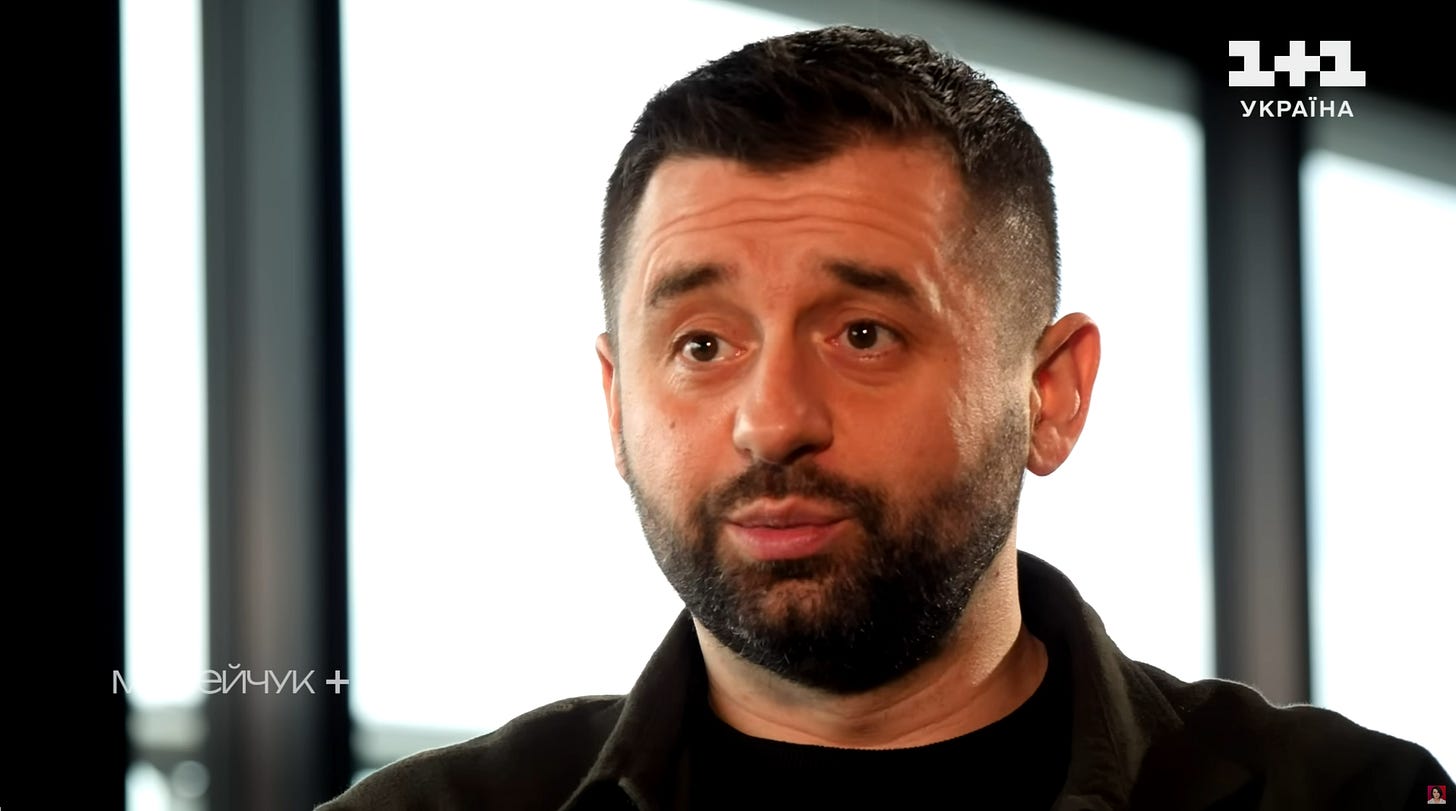
Shortly thereafter, a meeting took place in an undisclosed location in Poland including US Secretaries of Defense and State Lloyd Austin and Antony Blinken, respectively. Incidentally, this was also the meeting in which Lloyd Austin disclosed the US's vested interest in this conflict - to ‘weaken Russia’ - suggesting yet another US proxy war. The April agreement was also the trigger for a large-scale Russian retreat, in particular the forces around Kyiv.
A few days after his return to the capital, on March 6, Denis Kireev, one of the top Ukrainian diplomats engaged in the peace talks, was shot on charges of treason. The peace agreement did not make headlines, instead all attention turned to reports of Russian war crimes.
On September 30, 2022, Zelensky issued decree 679/2022, making negotiations with Russia illegal. This hammers the nail in the coffin of the Common Wisdom that Ukraine is open to or even seeking peace.
Warcrimes
The move to dehumanize the enemy to rally against him in wartime is not new. Unfortunately, neither is the fabrication of war crimes. Just during the 2000s, allegations were fabricated against Iraq, Syria, Russia, and many others. So, as good scientists, we have to be careful when presented with such accusations.
Ukrainian accusations of war crimes rest on two original sins: the Bucha massacre and allegations of rape against the Russian forces. These two deserve a full article of their own, but let us be brief here.
According to the Conventional Wisdom, Russian forces executed hundreds of unarmed civilians before leaving the town of Bucha. Reports by Human Rights Watch and Amnesty International primarily rely on excerpts of witness testimonies, while providing little to no evidetial material to support Russian involvement.
Furthermore, numerous inconsistencies plague the narrative: Russian forces withdrew from Bucha on March 30th 2022. Mayor Anatoly Fedoruk posted a video of him on the morning of March 31, with a cheerful grin on his face and no mention of atrocities committed. There are also no bodies visible in the streets behind him. The first footage of corpses littering the streets of Bucha appeared on April 1, as Ukrainian forces were retaking the town.
Russian officials pointed out that many of the dead bodies that appear in the footage wear a white armband, symbolizing their cooperation with Russian forces while they were still occupying the town. Furthermore, the corpses in the pictures presented do not appear to have been dead long enough to corroborate the allegations, as they lack the typical stains and stiffness. The officials propose that the people in Bucha were killed by Ukrainian nationalists in a cleansing operation after the departure of Russian troops.
Subsequently, on April 4 2022, NYT and Meduza articles claim, buttressed by satellite and drone imagery, that these corpses had been present on the streets since at least March 19.
The satellite and footage however stem from Maxar, a known US intelligence contractor and the Azov group respectively, the most notorious of Neo-Nazi militias that were incorporated into the Ukrainian armed forces. Given that both of these entities have active stakes in the conflict, one must approach their claims with a healthy dose of skepticism.
France dispatched a team of 18 gendarmes to help with the investigation, however no official reports have been published. The only preliminary reports that came from it indicated the usage of fléchettes cluster ammunition, a known practice from the Ukrainian side. That is in line with Ukrainian shelling of the town preceding the Russian retreat. In fact, Ukraine has yet even to publish the full list of names of the alleged victims of Bucha.
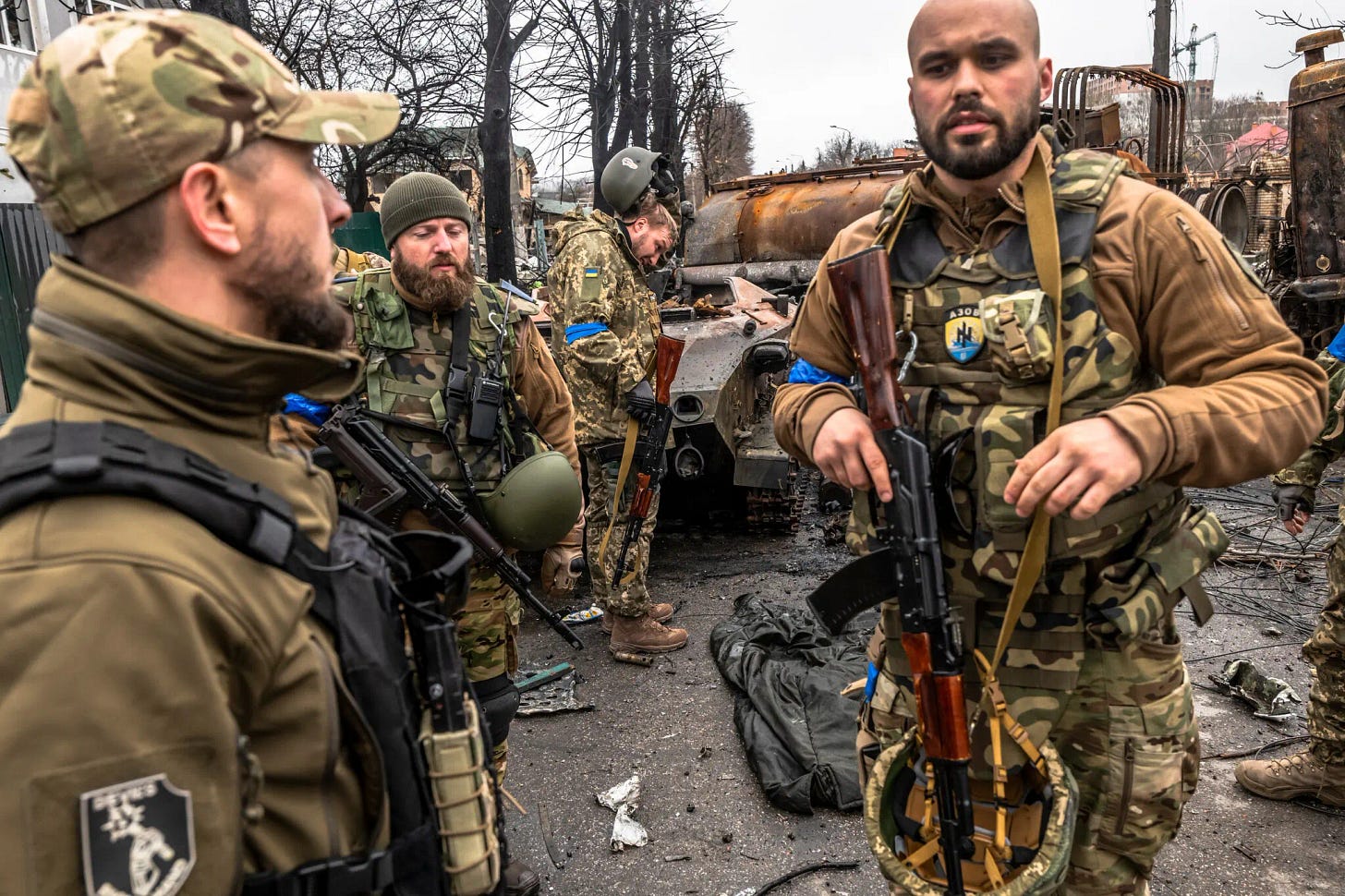
The other main pillar of anti-Russian PR rests on claims of rape. These claims can be traced back to the office of Lyudmyla Denisova, Ombudswoman for Human Rights in Ukraine. In June 2022, Denisova was fired because she fabricated evidence of rape, particularly the rape of children. Baseless accusations of violent, Viagra fueled rape are in fact recycled from the war on Libya. Denisova was also responsible for handling Bucha, raising further questions on the veracity of the Conventional Wisdom.
Of course, there has been a litany of war crime allegations from both fronts since these two events. Notably, the International Criminal Court even issued a warrant for President Putin.
While we currently can neither prove nor disprove the main allegations of war crimes against Russia, we can still probe for consistency:
On one hand, we are presented with the explanation of inhumanely aggressive, violent and incompetent Russian forces, based on an endless stream of accusations of atrocities. These accusations in turn rest primarily on witness testimonies collected by human rights NGOs and unverifiable imagery, provided by parties with a vested interest.
On the other, there is historic precedent of PR agencies carefully crafting the same image of ‘evil’ Russia committing multiple atrocities during the conflict in Georgia and debunked by a 2009 UN fact-finding report.
We also have an egregious array of historic lies from US foreign policy, some of which we visited earlier. These are usually propagated to push a new policy, a pattern that fits the events at hand: The Bucha massacre led to the passage of the Ukraine Lend-Lease Act, through which the US funneled a package of 40$ billion into the country. The pattern also fits well with the fabrications of Ombudswoman Denisova and the instrumentalization of Bucha to divert away from the April peace agreement.
Then, there is the known brutality exhibited by extremist militias who call Russians ‘orcs’, Ukrainian officials literally stating that Russians are ‘not humans’ and reports of Ukrainian troops using human shields.
Thus, if we combine these with the perennial ‘Cui bono?’, a more plausible explanation emerges:
Russia finds itself at the epicenter of an unparalleled Western propaganda crusade, centered on alleged atrocities. Some of these atrocities are pure fabrications, while others are in fact committed by Ukrainian forces. The objective is to marshal global sentiment against Russia. That in turn is leveraged to push imperialistic policies, impose an unprecedented array of sanctions on the country, provide Ukraine with increasingly ecalatory lethal weaponry without any public consultation or oversight and censor dissent to levels unimaginable before.
Subjugating Europe
In September, the Nordstream 1 and 2 pipelines were bombed. These run under the Baltic sea and provided about 20-25% of Europe’s gas . A chaotic furore ensued across the mainstream media, blaming Russia, Ukraine, and sometimes, inevitably with an ‘expert’ to contradict it, the US. However, the evidence pointing away from Russia as the culprit is overwhelming:
The pipelines push against US interests and were sanctioned
Russian Gazprom is the primary investor and owner of the pipelines
Biden promises to put an end to Nordstream in February
Polish foreign minister Radek Sikorski tweets “Thank you, USA”
The incident occurs in the Swedish exclusive zone. These are heavily monitored waters and home to annual NATO exercises
Legendary Pulitzer prize winning investigative journalist Seymour Hersch publishes a detailed article on how the US planned and executed the attack
Sweden conducts an investigation refusing Russian participation, but refuses to share the results because of “national security”
Russia asks for an independent UN investigation, but the resolution is blocked
In December, we learn that Russia has “quietly taken steps to begin expensive repairs”
Swedish journalists leaked a confidential RAND corporation report, suggesting just that kind of ‘controlled crisis’ to be in US interests. It describes the loss of Russian gas as devastating to the German economy, while benefitial to the US:
”In the medium term (4-5 years), the cumulative benefits of capial flight, re-oriented logistical flows and reduced competition in major industries may amount to US 7-9 trillion.”
RAND officially denies the authenticity of the document, however the style of the document and its alignment with US interests, but also its classification and incendiary content are reasons to doubt that.
The explanation that either Russia or Ukraine is behind the bombing is thus a bad one. On the other hand, the explanation that it was an extralegal, covert operation carried out by the US fits the thread through all the data points. If the latter is true, it represents an act of war by the US against its longterm ally Germany, inflicting an economic Pearl Harbor on it and wider Europe. This also raises serious questions about the sovereignty of Germany and Europe if they allow this to go unpunished.
Fighting for democracy
Let us address the piece of Conventional Wisdom that states that Russia launched a ‘full-scale invasion’ to thwart the emergence of democracy in an imperial conquest to restore something akin to the Soviet empire. Numerous ‘experts’ and articles propagate this view, and they draw upon utterances of US officials like Lloyd Austin and Tony Blinken.
Central to this narrative is a portrayal of Putin as a sole architect, attributing the entirety of Russia's foreign policy to his personal ambitions. Any mention of Russia’s security concerns is painstakingly avoided and direct quotes from Putin, if present, are cherry-picked and cut. A prime example stems from an interview in 2000 in which Putin remarks:
”Anyone who doesn't regret the passing of the Soviet Union has no heart.”
The following sentence however is convenieintly omitted:
”Anyone who wants it restored has no brains.”
In military strategy, there's a widely recognized principle that an invading force requires a numerical advantage of at least 3:1 with respect to the defender. This is because of the various tactical advantages enjoyed by the latter, such familiarity with the terrain, defensive positioning and infrastructure. To illustrate this, when Germany invaded Poland in 1939, it deployed about 1.5 millionn troops, while the Soviets invaded from the East with at least another 500’000. Poland’s forces counted about 1 million men, but a massively lower numbers of armoured vehicles, aircraft and so on.
In contrast, Russia's invasion force in 2022 counted some 180’000 men out of a total of 900’000 active personnel, while Ukraine's standing military was estimated at 200’000 men, with 900’000 reservists standing by. Kyiv counted close to 4 million inhabitants in 2022. It would take an estimated 900’000 troops to take and hold the capital alone. Russia rolled toward Kyiv with a force of roughly 30’000 men.
The explanation that Russia launched a ‘full-scale’ invasion at Ukraine with the purpose of conquering the country is thus not just bad, but an utterly absurd one.
Since we are treading so close to it, let us also address the explanation that this conflict represents a battle between democracy and autocracy. While the state of democracy in Russia is complex, many measures that concentrate power are hard to avoid, especially in the climate of heavy pressures from US foreign policy. Despite this, president Putin has significantly improved the Russian economy since he took office and enjoys approval ratings north of 75%.
In contrast, Zelensky's government, who was elected on a platform of peace, has taken steps that severely push to question his democratic aspirations. Thus, the regime:
severely curbed workers’ rights, bringing them back to 19th century levels.
outlawed all opposition parties.
shut down several TV stations.
canceled the 2024 elections.
initiated a massive wave of privatization by foreign firms. In particular, Zelensky's government opened Ukraine to a fire sale of land and other undisclosed resources, luring in Leviathans of finance like BlackRock, Goldman Sachs, George Soros and others. The vast majority of Ukrainians, over two thirds, were opposed to these reforms. They were pushed under the usual pretense of private investment to boost the economy.
But beyond democracy, there is also the question of sovereignty. Ukraine’s sovereign debt exceeded 130$ billion in 2022, it now exceeds 150$ billion. These numbers do not include the unknown hundreds of billions channeled through the lend lease act and other transfers. Reconstruction was estimated to cost 750$ billion in 2022, it likely exceeds a trillion dollars today. With such a heavy burden of debt, with the Ukrainian economy shrinking by a third, with most of its military equipment provided by the West, there is little room for Ukrainian sovereignty, even if its democratic standards were sound.
Even after paying due consideration to the fact that Ukraine finds itself amidst at war, the explanation that that this is a war on behalf of democracy is a bad one.
Fun fact: the regime first attempted to pass law 5371 that curbs rights for about 70% of the Ukrainian workforce in 2021, so the war argument does not hold up to scrutiny.
Conclusion
Armed with the knowledge we've traversed, and guided by the rules of rationality, it becomes increasingly difficult to believe the Conventional Wisdom. Instead, a distinct perspective crystallizes: The war in Ukraine is the result of a decades-long, premeditated and concerted effort of US foreign policy to weaken and contain Russia. This policy serves to promote global US hegemony and has a tradition of military action from South America to the Middle East.
It succeeded in some ways, such as the establishment of a pro-US government in Kyiv, weakening Europe and increasing its dependence on the US. It also succeeded in granting US multinationals access to cheap Ukrainian assets. Additionally, US firms gained sway over the future of the Ukrainian workforce, as it indebted the government to the tune of several hundred billion dollars. A Ukrainian workforce that finds itself with labour rights stripped to the level of the 19th century.
However, there were unforeseen outcomes and it failed in other ways. Russian forces, despite the initial chaos, proved more adept on the battlefield than many predicted. Furthermore, the sanctions had considerably lower effects on the Russian economy than intended. The international community, observing the US's dealings, especially with Germany and Ukraine, is turning away from the US dollar. This sentiment is particularly evident among the BRICS nations as they venture into establishing an alternative to the global reserve currency of the dollar.
Moreover, the US policy has eroded trust in global institutions, including the OPCW, UN, Amnesty International, HRW, ECHR, IMF, NATO, and the ICC as these organizations become increasingly politicized.
As I pen this from Switzerland, I took the liberty to investigate some of the biggest media outlets here reported since 2014. I looked at 20min, a free feuilleton with a large reach, and NZZ, arguably the main academic newspaper. The results are dire: For example, neither one touched upon the essence of the Nuland phone call around the time of the leak. When Nuland publicly apologized, both present a short article on her apology about the infamous ‘Fuck the EU’ statement, citing DPA, AP, Reuters, instead of in-house journalists. The same holds for most of the other key events, glossing over the brutality of the death squads, the April peace agreement, while catapulting accusations of war crimes to the front pages.
I would like to take this moment and point my finger at some fellow Swiss journalists that failed their duties. In particular, I blame the editors-in-chief in 2014 of 20min and NZZ, Marco Boselli and Markus Spillmann respectively. I also blame Eric Gujer, who took over the NZZ in 2015.
Gentlemen, you fail the most elementary rule of objectivity: applying the same rules to everyone. You fail to report atrocities committed against ethnic Russians for eight years, yet jump on any report of Russian atrocities provided by Kyiv; You highlight trivial lies by the Kremlin, yet fail to account for Ukrainian PR stunts that you echoed but get debunked. In doing so, you fail to initiate a pluralist public debate. You fail to inform the citizenship and hold the principal actors accountable.
So here we are, embroiled in yet another US war. Russophobia is endemic and thriving on the engine of McCarthyism. Yet this pales compared to the plight of the Ukrainians: Some 500’000 casualties, over 6 million refugees, hundreds of billions of dollars infrastructural damage and no end in sight.
Tradition demands that I end this on a positive note. Well, you made is this far, that has to count for something. Perhaps I even presented some facts you did not know. Maybe I even changed your perspective on certain things.
The truth usually finds its way into the Conventional Wisdom. It took several years for the Iraq war, and about 15 months for the nuances of the Covid pandemic. If this article helps to expedite that, then I will have been successful. If we’re really good, maybe next time, we can work together and get the truth out before the damage is done.


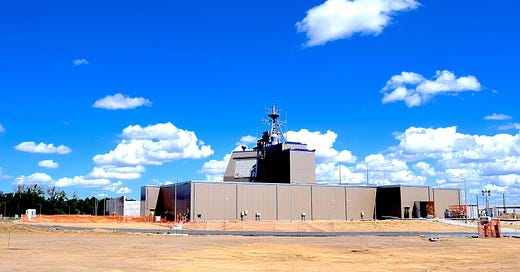



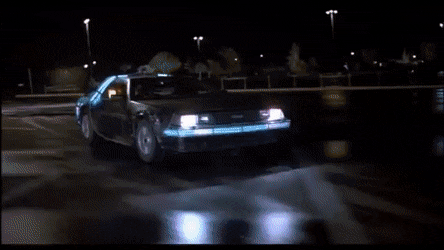


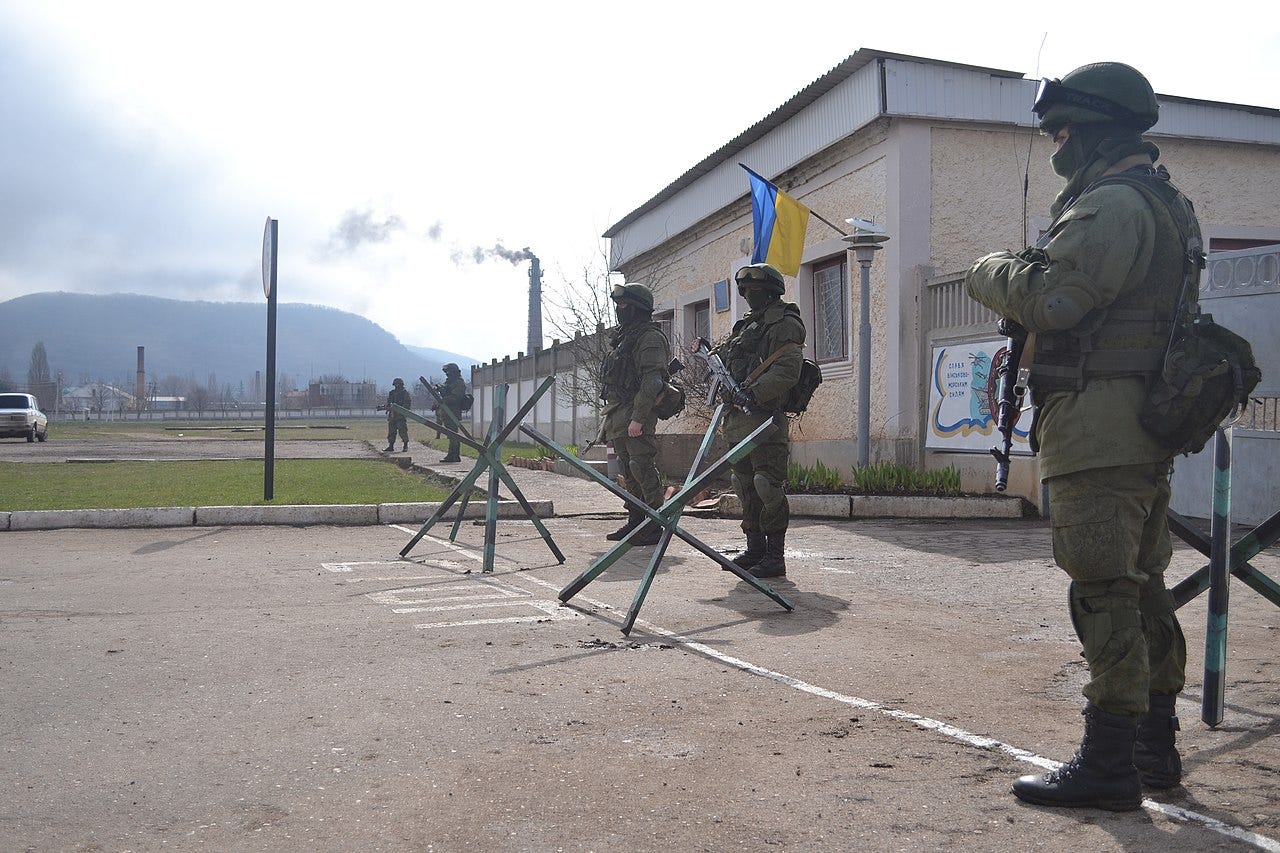
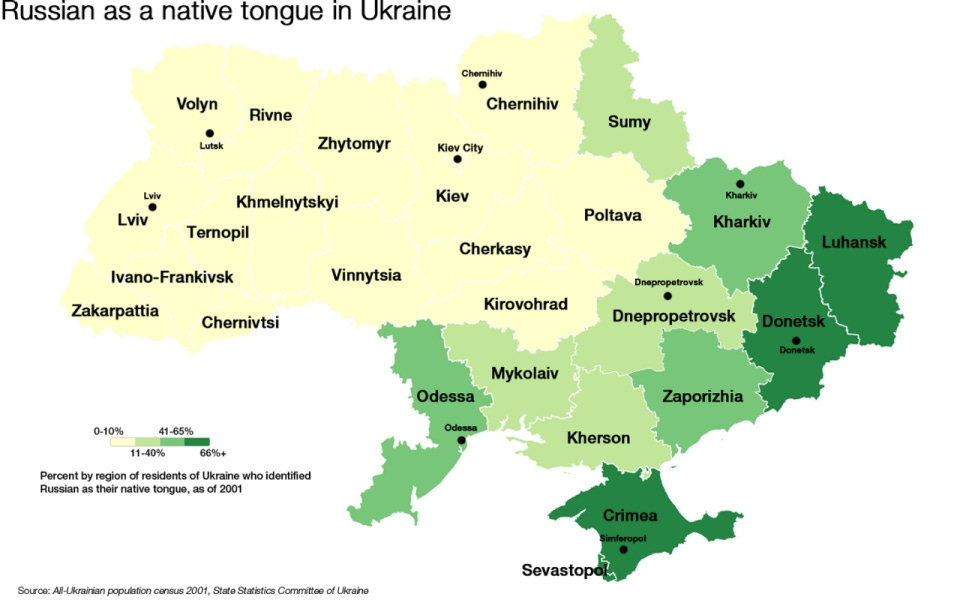
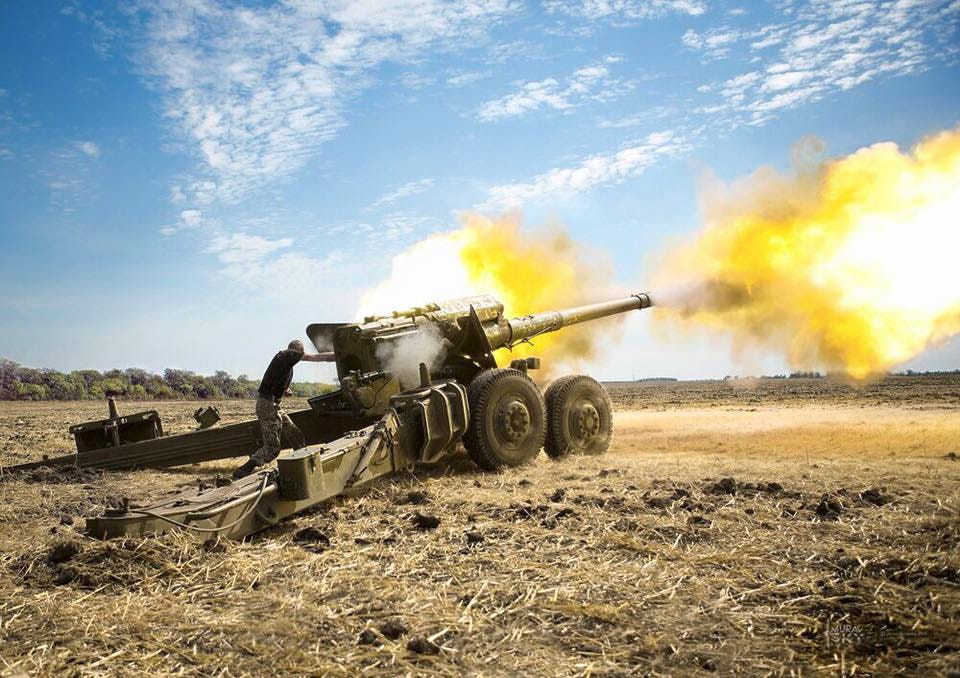
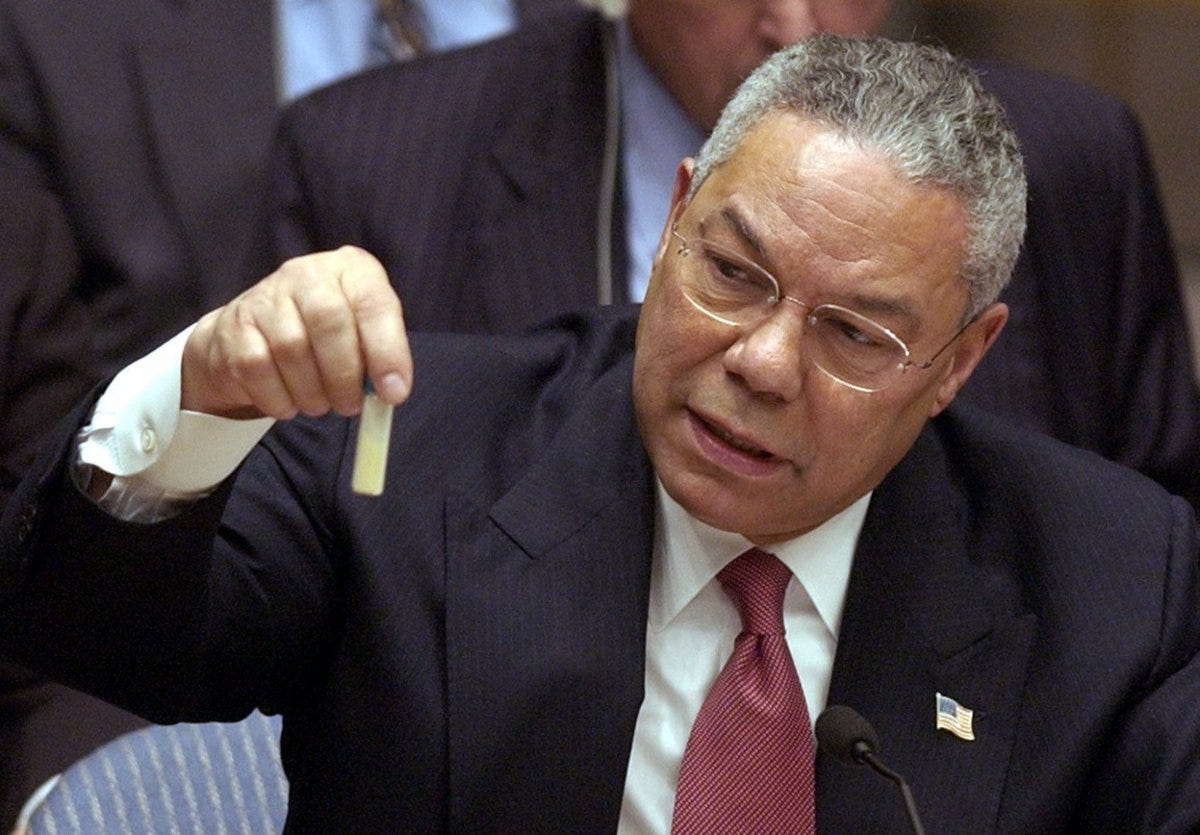
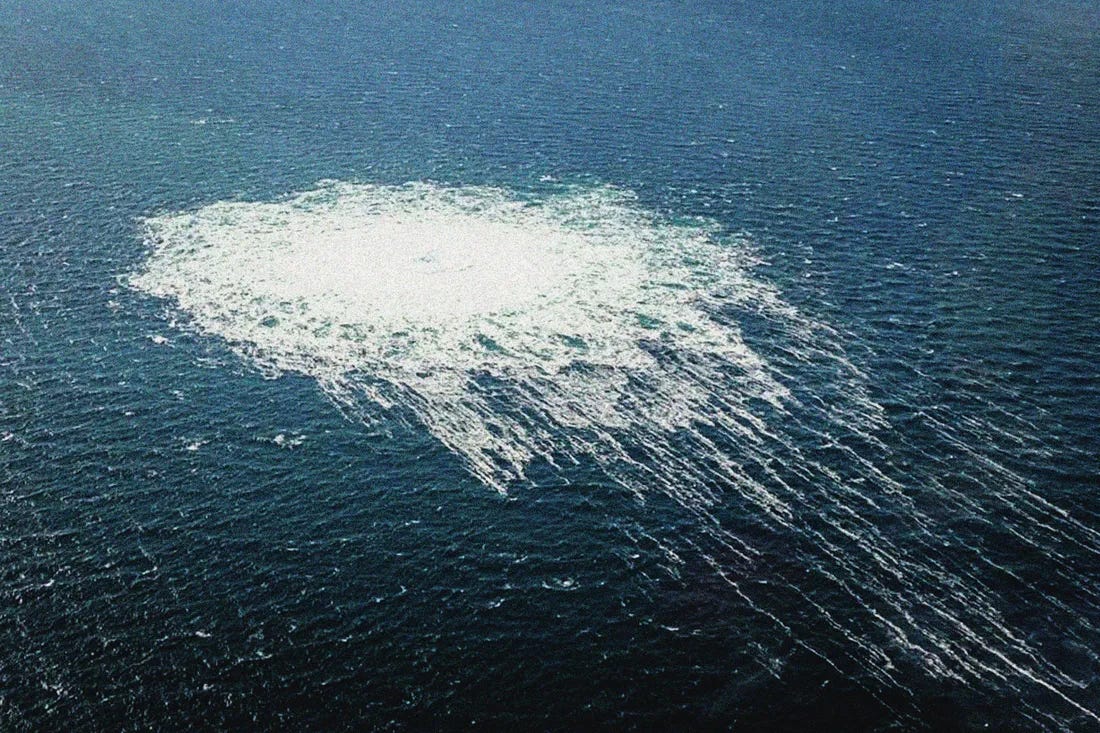

Fantastic account of facts. Articles like this could help to restore relations with Russia.
Thorough, informative, innovative...many new facts one never finds in the media
Scientists should come up and be heard for this is a topic touching each and everyone!